Learn the process of painting over a wide range of wallpapers by following the correct surface preparation techniques. Wallpaper adds colour, pattern, and texture to home décor. But ...
4 min read
Learn the process of painting over a wide range of wallpapers by following the correct surface preparation techniques.
Wallpaper adds colour, pattern, and texture to home décor. But the biggest drawback is that it may no longer complement the home’s décor after a few years. So, as wallpaper ages, becomes worn, or is out of style, the next step is to transform it into a painted wall. Since removing the wallpaper can become time-consuming and tedious, the next best option is to use paint on wallpaper.
Can I paint directly over wallpaper?
Painting directly over wallpaper can be done if it is difficult to remove the existing layer of wallpaper due to the presence of multiple layers of wallpaper or if the walls are damaged. Before applying paint to wallpaper, make sure to assess the quality of the wallpaper. Note that if the wallpaper is peeling, the surface is damaged or has a textured surface, then avoid painting on it, as certain imperfections may become visible through the paint. Additionally, if the wallpaper has significant mould spots, the paint may not conceal them and could remain visible.
What are the pros and cons of painting on wallpaper?
Pros: Using paint on wallpaper saves a lot of time, effort, and money. Also, painting on a wall surface also requires sanding to create a smooth and flawless surface.
Cons: Inadequate wall preparation can cause the wallpaper to peel, show its seams, and lead to a shabby appearance due to the damaged wallpaper’s visual appearance or textured surface.
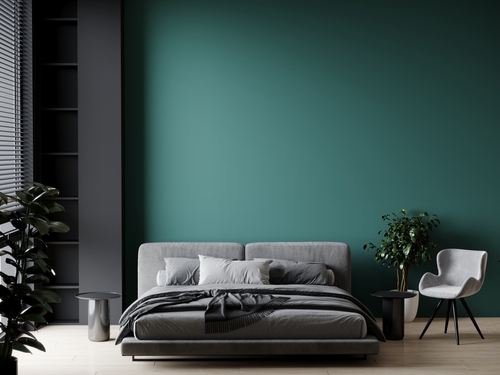
What are the steps involved to paint over wallpaper?
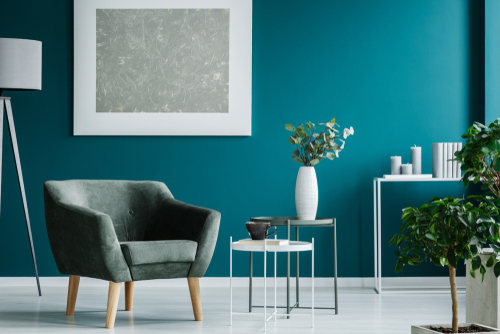
Step 1: Clean The Walls
Step 2: Create an Even Surface
Step 3: Use Primer
Step 4: Apply Two Coats of Paint
Before beginning the painting process on wallpaper, it’s crucial to consider a few key factors. You will need to evaluate its condition and identify the type of wallpaper in use.
Note that the final quality of the paint finish depends on how well the surface preparation is done, and different techniques have to be employed for different types of wallpapers. However, if the wallpaper surface is damaged due to the presence of holes or scratches then make sure to strip the wallpaper and then paint the wall surface to achieve a flawless finish. Additionally, you could use a thin and transparent caulk line to seal the seams of the wallpaper by applying it on the edges of the walls, around the periphery of the ceiling, and skirting.
This step-by-step guide will tell you how to use paint over wallpaper.
Step 1: Clean The Walls
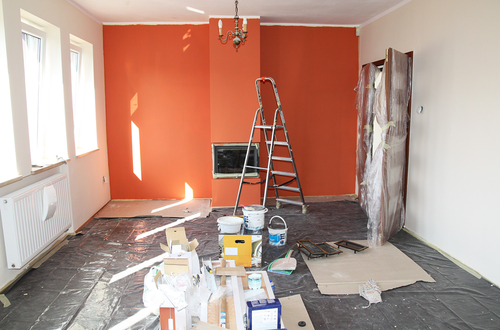
It’s important to vacuum-clean the wallpaper and eliminate as much surface dust as possible before painting. The next step is to wipe the wallpaper with a damp cloth, as the paint won’t adhere to the wallpaper if there is dirt or dust on it. To clean greasy walls, use a mild detergent solution on the sponge and gently wipe it over the wallpaper. Allow the walls to dry completely.
Step 2: Create an Even Surface

During the cleaning process, inspect for uneven surfaces, cracks, and imperfections, perform any required repairs, and apply filler where necessary. If the wallpaper is peeling or coming off at the edges, use adhesive to secure it. Fill the gaps using a joint compound, and create a smooth surface by sanding after drying. The next step is to use tape to protect the surrounding areas, such as mouldings and trim, from any paint splashes.
Step 3: Use Primer
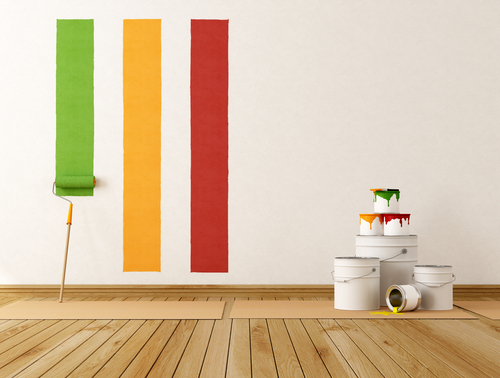
Primer is used on the wallpaper as the base coat on which the paint can be applied. The wallpaper hides the imperfections of the wall. It is advisable to apply an oil-based primer as water-based or latex primers may compromise the adhesion of wallpaper and can penetrate the wallpaper by creating air bubbles. Note that oil-based primers take a longer time to dry.
Step 4: Apply Two Coats of Paint
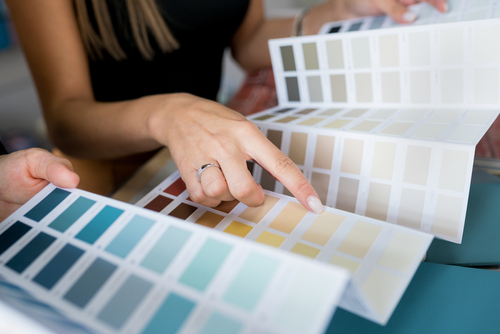
Once the primer has dried, start with the application of the top coat of paint on wallpaper. The process is similar to the process of standard wall painting, beginning in a corner and working in horizontal bands from top to bottom. For best results, let the first coat of paint on wallpaper dry before applying the second coat of paint. Consider applying an extra coat of paint, especially when painting coloured or patterned wallpaper.

It is advisable to go for an eggshell or matte finish as paint on wallpaper as the shiny surface of satin and semi-gloss finishes tends to highlight the imperfections of the paint. if you are using paintable wallpaper on a ceiling where there are minor flaws one can go for high gloss paint.


Subscribe to our newsletter